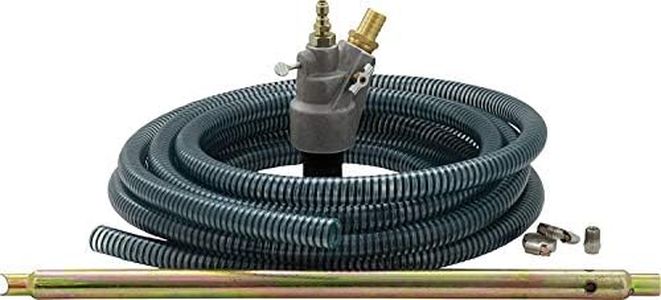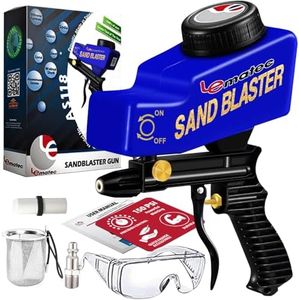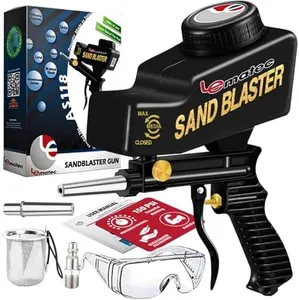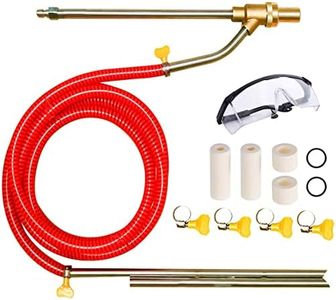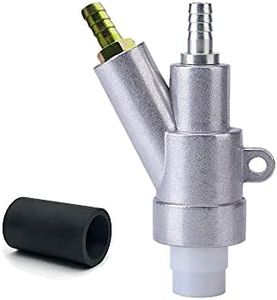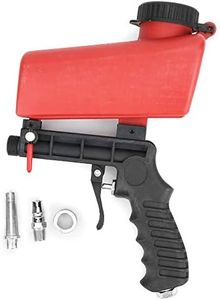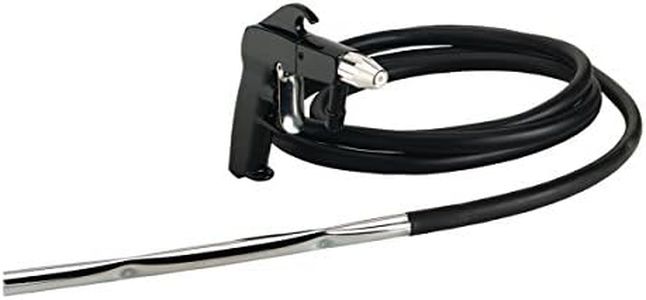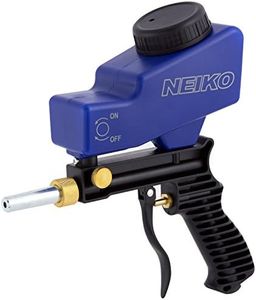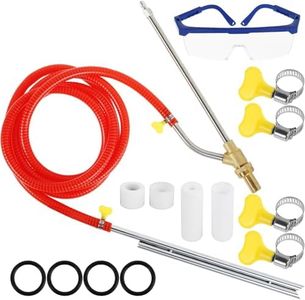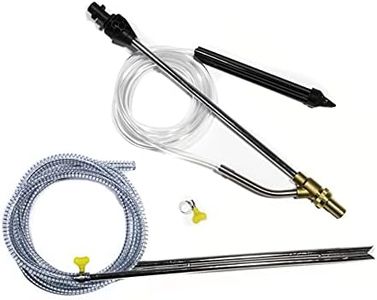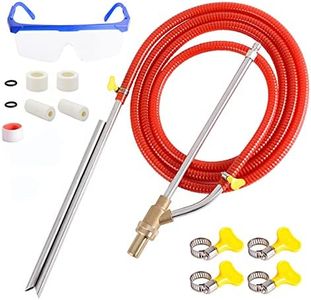We Use CookiesWe use cookies to enhance the security, performance,
functionality and for analytical and promotional activities. By continuing to browse this site you
are agreeing to our privacy policy
10 Best Sand Blasters
From leading brands and best sellers available on the web.Buying Guide for the Best Sand Blasters
Choosing the right sand blaster can make a huge difference in how efficiently and effectively you can clean, strip, or etch surfaces. The ideal sand blaster for you depends on the kind of projects you'll be working on, such as removing rust from metal parts, cleaning old paint off surfaces, or doing detailed etching on glass or stone. When deciding, it’s important to understand the core specifications that will affect power, ease of use, capacity, and the kinds of media you can use, ensuring your sand blaster matches your work requirements and comfort.Type (Siphon, Pressure, Gravity-Feed, Cabinet)The type refers to how the sand blaster delivers the abrasive media. Siphon systems draw media up through a tube, pressure blasters use compressed air to force the media out, gravity-feed blasters use gravity to drop the media into an air stream, while cabinets are enclosed systems. Siphon types are simple, affordable, and best for light to moderate work, but slower. Pressure types work faster and are more powerful, ideal for heavy-duty or outdoor use, but are more complex. Gravity-feed is efficient for smaller, precise tasks. Cabinets keep dust contained, perfect for frequent or indoor use. Pick based on the scale and frequency of your projects—if you only occasionally remove rust from small parts, a siphon or cabinet style may be sufficient, while large, frequent jobs benefit from a pressure model.
Tank CapacityTank capacity refers to how much abrasive material the blaster can hold. Smaller tanks (under 10 pounds) are lightweight and easy to maneuver, suitable for short or detailed tasks. Medium tanks (10 to 50 pounds) balance usability and capacity, good for medium-size projects. Large tanks (over 50 pounds) allow for long, uninterrupted work but can be heavy and harder to handle. Choose a tank size that matches the duration of your typical job: small for quick tasks, large if you need fewer refills for big areas.
Air Pressure Requirement (PSI)This specifies how much air force is needed to operate the sand blaster, measured in pounds per square inch (PSI). Low PSI units (under 70) are suitable for delicate or smaller jobs; mid-range (70–100) for general home and garage projects; and high PSI (over 100) for industrial strength and faster material removal. Make sure your air compressor can supply at least the minimum required PSI for your chosen blaster—this ensures consistent performance and avoids damaging your equipment.
Media CompatibilityMedia compatibility is about what type of abrasive you can use, such as sand, glass beads, walnut shells, or baking soda. Some blasters are designed for specific kinds of media, while others are versatile. For rough stripping, harder or coarser media like sand or aluminum oxide are used; for fine or delicate work, softer materials like soda or glass beads are preferable. Check which media your blaster can support and match it to your project—heavy paint removal or rust may need harsher media, while etching or finishing requires something gentler.
Nozzle Size and TypeNozzle size and type determine the amount and pattern of abrasive flow. Smaller nozzles provide more control and conserve media for detail work, while larger nozzles allow faster coverage but use material more quickly. Nozzle material, such as ceramic or hardened steel, affects durability—ceramic is cheaper but wears out faster, steel lasts longer. Choose a nozzle size suited to your project's scale—smaller for delicate or tight spaces, larger for big or heavily rusted surfaces.
PortabilityPortability concerns how easy it is to move the blaster around your workspace. Lightweight, hand-held models are great for tasks where you need to move often or cover awkward angles, while heavy, stationary units or cabinets are good for dedicated spaces and frequent use. Consider how much you'll need to move the blaster—opt for portable if you’ll be working in different areas, or stationary if it stays in one spot.
